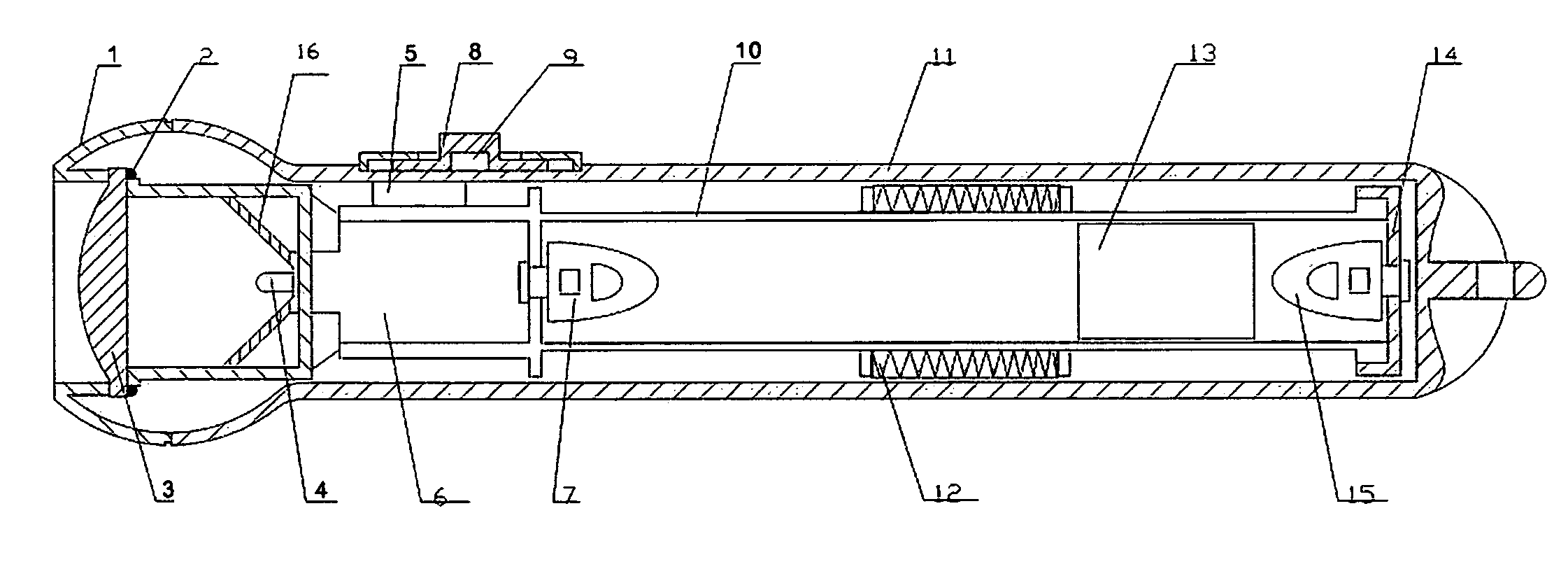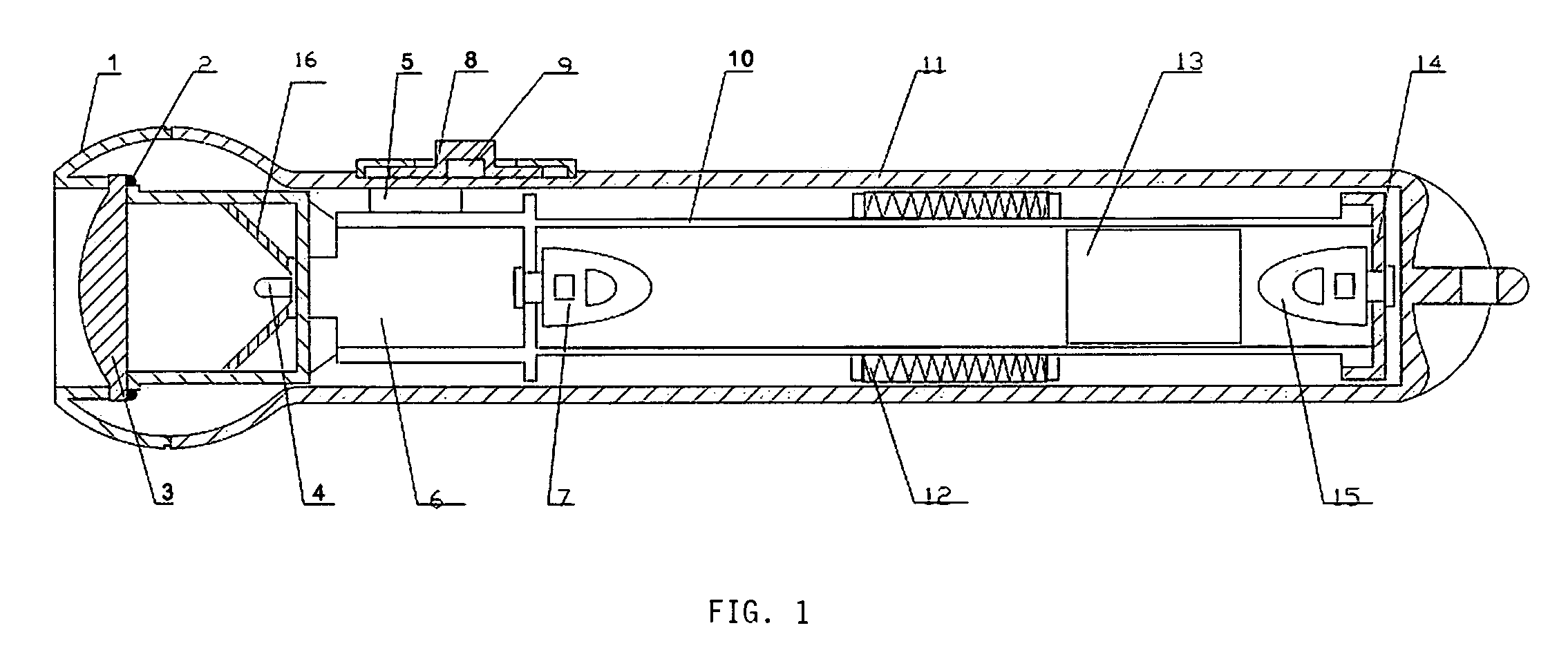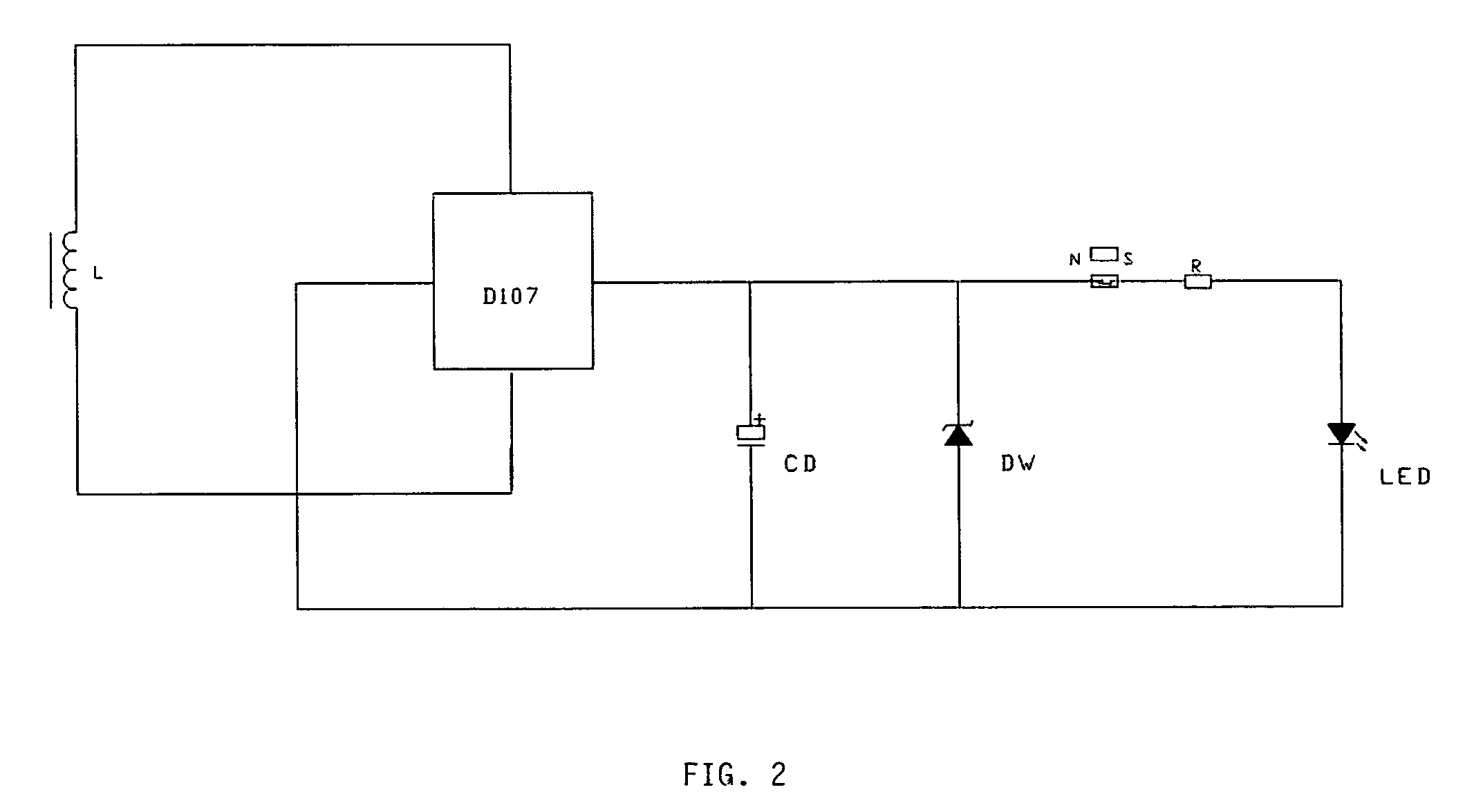Renewable energy flashlight
a flashlight and renewable energy technology, applied in the field of renewable energy flashlights, can solve the problems of loss of rebound energy, rapid wear of parts, and fatigue of springs, and achieve the effects of reducing waste in human exertion, increasing the rebounding speed of the charging magnet, and improving recharging efficiency
- Summary
- Abstract
- Description
- Claims
- Application Information
AI Technical Summary
Benefits of technology
Problems solved by technology
Method used
Image
Examples
Embodiment Construction
[0034]One preferred embodiment of the renewable energy flashlight is shown in the FIG. 1 side cross section. The components shown are as follows:[0035]1. Bezel[0036]2. Seal[0037]3. Beam magnifying lens[0038]4. Light Emitting Diode (LED)[0039]5. Sealed ferrous reed switch[0040]6. Circuit board with capacitor[0041]7. Seed Magnet[0042]8. Sliding plastic switch shield[0043]9. Switch Magnet[0044]10. Inner tubular carriage[0045]11. Polycarbonate outer shell housing[0046]12. Copper induction coil[0047]13. Charging magnet[0048]14. Tube sealing base cap[0049]15. Elastomagnetic rebound member[0050]16. Reflecting bowl mirror
[0051]Sealed within the renewable polycarbonate outer shell housing 11 is an inner tubular carriage 10 into which is slideably mounted a charging magnet 13. The tubular carriage 10 is surrounded by a copper coil 12, such that as the charging magnet 13 reciprocates there through an electrical current is generated, which is collected on the circuit board capacitor 6.
[0052]A p...
PUM
 Login to View More
Login to View More Abstract
Description
Claims
Application Information
 Login to View More
Login to View More - R&D
- Intellectual Property
- Life Sciences
- Materials
- Tech Scout
- Unparalleled Data Quality
- Higher Quality Content
- 60% Fewer Hallucinations
Browse by: Latest US Patents, China's latest patents, Technical Efficacy Thesaurus, Application Domain, Technology Topic, Popular Technical Reports.
© 2025 PatSnap. All rights reserved.Legal|Privacy policy|Modern Slavery Act Transparency Statement|Sitemap|About US| Contact US: help@patsnap.com



